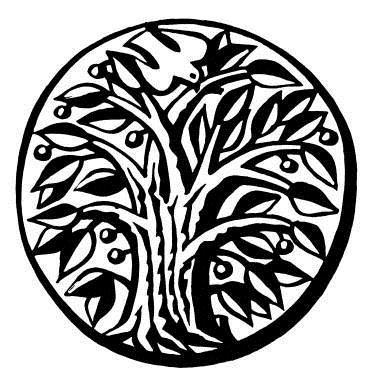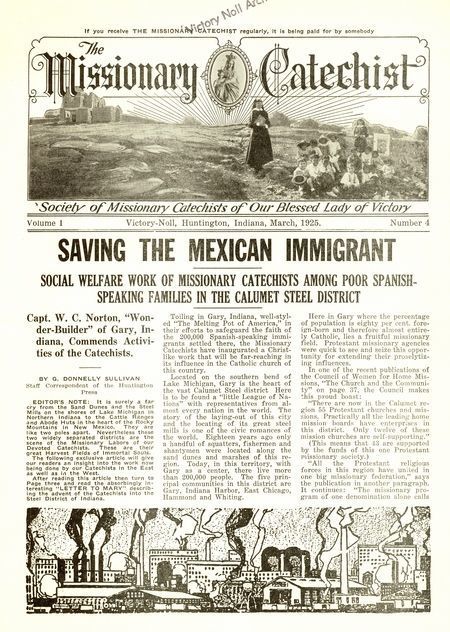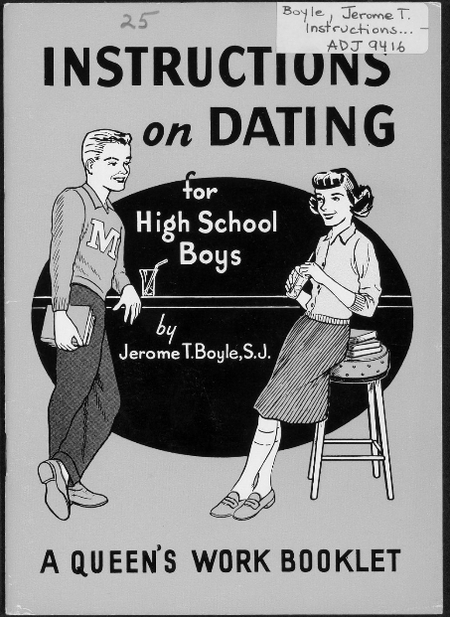Lead Story
The Catholic Research Resources Alliance: Providing Access to Rare and Unique Materials
From the Spring 2013 issue of American Catholic Studies Newsletter
As Ed Starkey tells the story, it all started in a bar across from the Alamo. There, Starkey, then university librarian at the University of San Diego, and Charlotte Ames, then Catholic American Studies librarian at the University of Notre Dame, and others attending the 2001 American Library Association Midwinter Meeting, began the first of many conversations seeking ways to ensure that scholars and students would make frequent and increasingly innovative use of the rich body of records and scholarship from and about the Catholic tradition.
Their discussions gained momentum as like-minded colleagues in Catholic libraries and archives joined them in envisioning new ways of how they might work together to create improved opportunities for discovery and enhanced access to Catholic resources. Scholars, librarians, and archivists shared their knowledge of the unique resources of their institutions as well as their frustrations, and successes, in finding and using resources held by other academic, seminary, religious and diocesan archives and libraries.
Seven years later, in 2008, eight Catholic academic libraries joined together to launch the Catholic Research Resources Alliance (CRRA). Its mission: to provide enduring global access to Catholic research resources in the Americas, beginning with access to rare, unique, and uncommon research materials.
Millions of books, journals, newspapers, manuscripts, images and archival resources, emanating from all levels of the church and from scholars, students, and lay writers are known to exist in libraries and archives worldwide. But gaining access to these resources all too often resembles following clues in a treasure hunt. These materials are widely collected, with hundreds of collections in the United States and Canada alone, but they often aren’t recognized as a national collection and have not been connected in a single bibliographic system. Worse, some resources lie hidden, buried within a note listing individual items in a large collection or bereft of any description at all.

The Alamo-born discussions became more important as the mixed blessings of mass digitization of resources became apparent. In the Google age, Internet users too often expect to be able to find anything, anywhere—and that many, if not most, source documents are themselves online. The disparity between these assumption and the reality that digital resources would for some years only represent a small sampling of actual resources was troubling: Scholarship would suffer if researchers overlooked the significant but out-of-sight analog resources, discoverable only through searching individual library and archives catalogs.
Early on the CRRA had two important items on its to-do list. First, it needed to expand its network to include other North American libraries, archives, and related institutions. Second, the organization needed to develop a website for scholars to tap into the network’s combined resources. Eric Lease Morgan, digital projects librarian at the University of Notre Dame, led the creation and implementation of the Catholic Portal, a website to catalog resources at participating institutions. Morgan used the open source application VuFind, which was developed at member institution Villanova University, to create the site. It electronically brings together Catholic research resources and collections held at CRRA member institutions, providing scholars and students with easy, effective, and global discovery. When resources exist in a digital format, the Portal links directly to the digital resource.
This technical development was the critical first step in addressing the needs of the 21st century historians. Georgetown University Librarian Artemis Kirk called the development of the Catholic Portal “proof of concept.” And the proof continues: Today 36 participating institutions in North America list holdings on the Catholic Portal, which catalogs more than 90,000 items and 235 archival collections. And use of the Portal has nearly doubled between 2010 and 2012, from 1,701 daily site visits to 3,043.
“Rare, unique, and uncommon”
After the technical development of the Portal, the next step was deciding what content should be accessible. The CRRA Collections Committee, led by Robert O’Neill, the Burns Librarian at Boston College, determined the top priority to be rare, unique, and uncommon Catholic research materials, including manuscripts, ephemera, photographs, artifacts, and rare books. They determined 12 collecting themes of current scholarly interest. [see sidebar.]
A critical concern for scholars is the lack of access to “hidden” collections—collections or resources for which no catalog record or finding aid exists, or ones with under-described records. Without adequate descriptions, scholars cannot easily determine what collections exist, where they exist, or what they contain. That challenge is compounded in many archives of congregations and dioceses that have little or no online presence. Catalogs may exist on cards, and websites perhaps describe only the general nature of the collections. There may be no records in WorldCat, the largest and most frequently searched online catalog. In other cases, collections measured in tens or hundreds of linear feet may be described in a single record, thus enabling discovery only in terms of the author (papers of) or subjects of the collection. And even when special collections and archives have created a detailed listing of the contents of the collections, these finding aids are for the most part in typewritten or word-processed documents, unsearchable by anyone off-site.
These hidden collections are usually among the special and archival collections in libraries, and archives. These are the collections of rare books, unique manuscripts, oral histories, and papers and records of individuals and organizations—the very materials that form the bedrock of scholarship.

The wisdom of focusing on hidden collections quickly became evident. As institutions have made their small yet rich and unique collections visible, they have opened up opportunities for scholars to draw new connections between individuals and cite new evidence. The Ade Bethune Collection at St. Catherine University is just one example. The ability to search within this collection, for instance, made it possible to find previously unknown interactions between Ade Bethune, the 20th-century artist associated with the Catholic Worker movement, and individuals such as Dorothy Day and the artist Eric Gill. It also highlights material that helps answer questions about the influence of social action on graphic art and, in turn, how graphic artists conveyed the message of social action to the broader public. Even extensive collections, such as those in the Seton Hall University Archives relating to Saint Elizabeth Ann Seton, the first American Sister of Charity, become more valuable in the presence of smaller and more narrowly focused collections. The deep searching functionality of the Catholic Portal, which is not a feature of WorldCat or Web search engines, shows mention of Saint Elizabeth Ann Seton in the finding aids of special collections held in 15 library collections, including the Reliquary Collection at the University of Dayton. The detailed lists of individuals, subjects, and/or time periods related to the contents of the collections make it possible to access connections between Seton and other prominent Catholic figures such as John Gilmary Shea, Paul Hanly Furfey, and James J. Norris—connections that are only possible when working across connections.

Scholars using the Portal can now access the records of the Philadelphia Archdiocesan Historical Research Center (PAHRC), which are not included in WorldCat. Another coup for Catholic historians happened when Jeff Hoffman, archivist for Our Lady of Victory Missionary Sisters, spoke to the Missionary Sisters about making the Missionary Catechist more accessible to researchers. Encouraged by the opportunity to make this journal known in the context of other resources, the Missionary Sisters decided to digitize the entire 40-year run—the only known complete collection of the Missionary Catechist—and will soon make it accessible via the Portal.
Growing important, curated collections
One distinction of the CRRA is the systematic and collaborative manner in which important curated collections are developed. Each institution joining the alliance examines its holdings to tag materials for inclusion in the Catholic Portal. Naturally this process varies for each institution. The “rare, unique, uncommon, Catholic” mantra and the 12 themes guide CRRA members in determining which of their own holdings fit the bill. Examining call number ranges in the stacks (for example, BX 800-4795 Catholic Church, History), sorting microfilm records of Catholic newspapers, reading pamphlets, rare books, parish histories, and biographies of saints—all these activities are first steps in curating the Catholic Portal.
Virtual collections on the Portal have evolved as institutions have contributed perhaps just a few items within a certain collection area, for instance, parish histories. Taken together with parish histories held by other member institutions, these become important collections. Collections of note (those with at least 100 records and 15 institutions contributing) include the following:
• American Catholic national and international organizations (National Catholic Education Association, Catholic Charities USA, US Council of Catholic Bishops, National Catholic Conference for Interracial Justice, Catholic Association for International Peace, etc.)
• Catholic pamphlets (with materials across institutions targeted for digitization; currently hundreds of digitized pamphlets are already in the Portal)
• Catholic social action (including the Catholic Worker movement)
• Significant Catholic thinkers and writers, e.g. Thomas Merton, Cardinal Newman
These collections and others like them support research on the influence of Catholics and Catholic thought in the world, and speak to scholarly interests.
Scholars provide direction
From its inception, the CRRA has focused on the needs of historians and scholars in other fields who wish to understand and relate the Catholic tradition and experiences to society today. The CRRA Scholars Advisory Committee, led initially by Tim Meagher, historian, archivist, and professor at The Catholic University of America, includes nine distinguished scholars of Catholic history and theology. This group meets regularly to advise the CRRA on trends in the field and to set directions for the development of CRRA collections.
At the November 2011 CRRA Symposium at Duquesne University, Leslie Tentler, professor at The Catholic University of America and member of the Scholars Advisory Committee, spoke of her participation in the Cushwa Center’s “Lived History of Vatican II” Project, which involves 15 scholars doing research in 10 countries. She emphasized the transnational perspective and suggested future research directions of scholars might focus on the 20th century in areas such as the religious crises in the 1960s and 1970s. By understanding trends in research such as these, the CRRA can better grow and curate collections that support research.

A common refrain among scholars (as well as students, laypersons, and archivists) has been the need for access to the actual resources—“the things themselves”—not just to records describing them. Although rare and unique materials are not shared through usual interlibrary lending programs, digitization makes them available. While the CRRA Digital Access Committee is exploring options to expand links from Portal records to existing member content in external repositories, members are also accelerating digitization projects of Catholic pamphlets, the Official Catholic Directory, and Catholic newspapers—all identified by scholars as highly valuable resources for Catholic historians and others.
The Catholic Newspapers Program
Catholic newspapers in particular are relevant to a broad array of issues across disciplines, including immigration and adaptation to new environments, charitable work and social justice, education, and health care. Catholic newspapers—defined as Catholic by purpose, audience or tradition, official and unofficial—document not only actions of episcopal elites but also the activities of local parishes, societies, schools, and organizations in their efforts to observe holy days, preserve languages, and embrace American popular pastimes like sports and variety shows. Members of the Scholars Advisory Committee have noted their intense use of such resources.
Catholic newspapers are not rare in the usual sense of the word. However, they are held in scattered locations with unknown holdings, in fragile condition and vulnerable to disappearance. Scholars recommended digitizing Catholic newspapers for access, use, and preservation. Shawn Weldon, assistant archivist at PAHRC, which holds one of the largest collections of Catholic newspapers in the United States, recognized the importance of digitizing its collection, and today serves on the CRRA Catholic Newspaper Task Force, which is led by Noel McFerran and oversees the Catholic Newspapers Program (CNP).

The CNP builds on previous efforts and supports current work of other organizations to preserve Catholic newspapers. Individual libraries, Catholic historical societies and the American Theological Library Association (ATLA) have microfilmed many Catholic newspapers. CRRA members are digitizing Catholic diocesan and student newspapers in their states and universities. Boston College is exploring strategies to make the Boston Pilot available. Duquesne University has digitized the Pittsburgh Catholic, 1844-1950. PAHRC, Saint Charles Borromeo Seminary,and Villanova University have targeted the Catholic Standard & Times, 1866-1923, for digitization. The CNP is also exploring options for either a central or distributed repository for digitization projects.
The extent to which Catholic newspapers have been digitized in other local, state, regional, or national program is unknown, but the CNP task force has created a list of 46 (and growing) digitized periodicals at Catholic Newspapers Online. The task force welcomes suggested additions to the list of digitized or born-digital Catholic newspapers.
Michael Skaggs, a graduate student at the University of Notre Dame, is researching how the discussion and impact of Vatican II among Indiana Catholics might vary from Catholics in major cities such as New York or Boston. In particular, he is exploring how the Second Vatican Council was received through the newspapers that Indiana Catholics read at the time. The use of digitized newspapers connects him directly to the sources, and new tools will enable him to more easily uncover and compare national and local perspectives as represented in the papers.
Another digitization project, still in the early stages, has the CRRA working with archivists from the Catholic News Service (CNS), the international wire service that since 1920 has captured the history of the church in the U.S. and abroad in its newsfeeds (CNS coverage of the Vatican dates back to the 1930s). Digitizing the CNS Archives would greatly facilitate comparative analyses to identify and distinguish between clerical and lay Catholic views across states and provinces. Skaggs includes CNS materials as a priority on his resource wish list because they would enable easy comparison of local, regional and national coverage.
Through digitization and access via the Catholic Newspaper Directory, it will be possible to search CNS materials across a range of Catholic newspapers in pursuit of new connections and historical perspectives. By virtue of their enhanced searchability, the possibilities for scholarly use increase exponentially.
Catholic resources in the classroom
The advantages of the Catholic Portal, the Catholic Newspaper Project, and the CRRA in general are not just for professional scholars and researchers, however. Students in secondary and undergraduate levels also stand to benefit. The availability of so many materials in so many collections has renewed interest in bringing these resources into the classroom. Maria Mazzenga, education archivist and faculty member at The Catholic University of America (CUA), created the American Catholic History Classroom for use by all teachers and professors. Accessible from CUA as well as from the American Catholic Historical Association website, Mazzenga selected primary sources for use in illustrating the American Catholic experience on critical historical topics such as race, living wage, and industrialization issues. At DePaul University, Professor Susanne Dumbleton collaborated with archivists to integrate selected resources from the Sister Helen Prejean Papers at DePaul (not yet accessible via the Portal) into a course to meet the social justice requirement of the University. She has long been studying Prejean’s work as an example of leadership for social justice. The archivists organized an online exhibition that allowed students to develop a deeper understanding of Prejean and to use her writings to explore issues of power among racial, social, cultural, or economic groups in the United States. Marta Deyrup, professor and catalog coordinator at Seton Hall University Libraries, is spearheading a third initiative in bringing Catholic resources into the classroom. With professors and archivists from 15 Catholic institutions, she is creating an online exhibition on women religious, which is likely to find its way into classrooms across the country.
Future directions
Since 2008 the CRRA has reached significant milestones in carrying out its mission of providing enduring, freely available, global access to Catholic research materials in the Americas. But more milestones lay ahead: opportunities to expand the network further; to increase the content and scope of the Catholic Portal and the Catholic Newspaper Program; to bring members together to establish digitizing priorities; to pursue collaborative grant projects; to coordinate digitization activities locally or regionally; and to implement digitization-on-demand programs (allowing a researcher to request an item be digitized for their use and then added to the Catholic Portal repository for future use by others).
To do all that, the CRRA is developing a long-term sustainability plan to include not only member support, but also partnerships, sponsorships, and other means of funding. The libraries, archives, and other institutions that belong to CRRA bring unique strengths and needs to the alliance, and sustaining this network is a vital step in continuing to offer freely available access to rare, unique, and uncommon scholarly resources in the Americas.
Most importantly, the CRRA will continue to call on scholars of Catholicism for their input on trends and emerging research questions, identifying high value resources, useful services, and ways to incorporate primary Catholic resources within the classroom. The heart of the alliance’s work, after all, is to ensure that scholars have the appropriate tools and access to collections that will advance their work—and that the tucked-away treasures of Catholic history get the consideration they deserve.
—Pat Lawton, CRRA digital projects librarian
Jean McManus, Hesburgh Libraries Catholic studies librarian
Jennifer Younger, CRRA executive director
--
Online subscriptions to the newsletter are free. To subscribe, please contact us at cushwa.1@nd.edu or (574) 631-5441 with your name and email address.